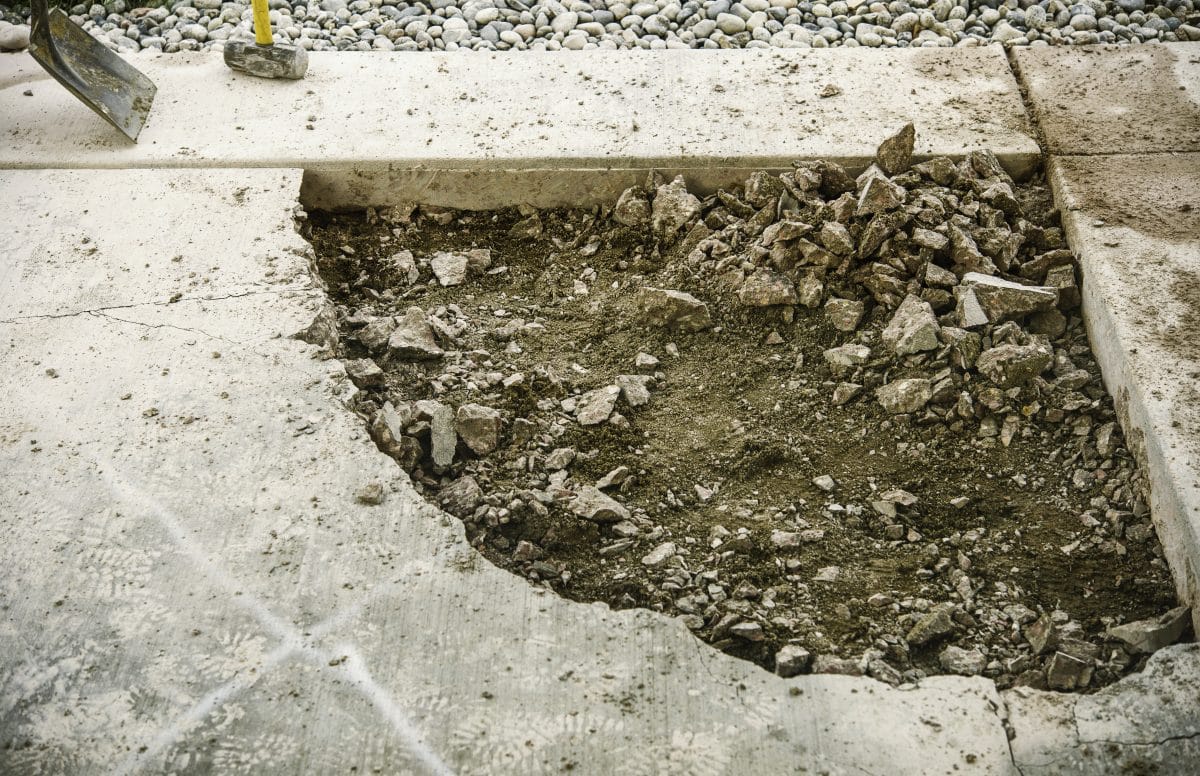Concrete is exceptionally durable; however, it is still vulnerable to some wear and tears over the years. Many homeowners may be faced with the challenging decision to either repair or replace their concrete. Issues that can be experienced include cracks, spalling, settlement, discoloration, disintegration, and much more. Some of these concrete issues can be easily repaired, and, in some cases, it is best to replace the concrete structure. So how do you know which decision to make? We will look at the leading causes of concrete damage and analyze if it is best to repair or replace it.
Determine the cause of damage
Driveways, concrete patios, and walkways are exposed to various elements that can disrupt the structure and foundation. In order to address the issue, you need to look at the root cause of the problem.
Driveways
A driveway can experience concrete damage due to the following reasons.
Shifting ground or soil beneath the concrete surface can result in concrete fractures. In some regions where cold weather is expected, concrete can experience the freeze-thaw cycle—occurring when the ground contracts and expands due to climate. De-icing salt and chemicals also contribute to this issue. As the snow/ice melts, moisture seeps through, and the concrete is exposed to thawing and refreezing surfaces.
Growing tree roots are also problematic. The roots grow beneath the surface and can potentially rise from the ground. The root growth can impact the pressure, causing cracking, fractures, or buckling.
Concrete Patios
Concrete patios experience some damage, more or less for the same reasons as driveways experience cracks and fractures. Some reasons include unstable foundations that cannot support the weight of the concrete. Soil contracts and expands due to moisture levels, growing tree roots, animals who make burrows that can cause weak points under the surface. Weather conditions can always play a significant role in concrete damage as well.
Walkways
Walkways experience just as much wear and tear as driveways. As a traffic hot spot, weather conditions and de-icing solutions cause concrete damage. Loose soil can also cause sunken concrete resulting in an uneven surface.
Assess the damage
Once the cause has been determined, the next thing to do is to assess the damage. In order to make a clear decision on whether you are going to repair or replace the concrete, you need to gauge the severity of the issue. Minor issues can be patched up; however, it may not be a long-term solution.
A crack or fracture that is measured at half an inch to inch-wide calls for replacement. An apparent underlying issue has caused the concrete to crack, and the foundation needs to be assessed. A crack less than half-an-inch could be repaired, but it is advisable to keep a close eye on the area as it can worsen over time.
Sunken concrete creates an uneven surface. The subgrade is the issue. As the foundation or land below is settling, this circumstance requires replacement. Any slab leveling required qualifies for a replacement.
Aesthetic issues such as crazing, discoloration, small abrasions, or cracks repairs are your solution.
Still unsure of whether you should repair or replace, ask a concrete pouring professional. At Stouffville Mobile Redimix, no question is too complicated. Be sure to expect the best concrete pouring advice.

